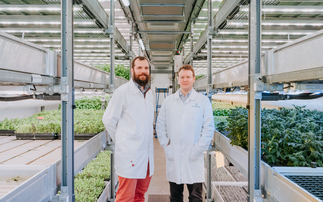Leading paper producer reveals how its high-profile zero deforestation strategy is seeking to embrace a 'landscape approach'
Asia Pulp and Paper (APP) has been on quite a journey during the past three years. The high-profile Indonesian paper producer has moved from a bête noire of environmental groups to a leading voice in the global debate on how best to tackle deforestation, after it promised to bring an end to deforestation of natural forest on its concessions and saw its new strategy secure a vote of confidence from Greenpeace.
However, as APP's managing director for sustainability and stakeholder engagement, Aida Greenbury is happy to attest, pledging zero deforestation is, in many ways, the easy part. Delivering on that promise is an order of magnitude harder, particularly when you consider the firm's business model was historically built on deforestation and many of the factors that contribute to deforestation in developing economies are beyond the control of any single firm.
Consequently, Greenbury reveals the company's deforestation strategy has been steadily strengthened over the past three years, moving through a number of phases as it seeks to find a genuinely sustainable solution to the problem of deforestation in Indonesia. "We have learnt a lot and in particular we have learnt a lot about the scale of the challenges we are facing," she tells BusinessGreen, ahead of next week's Twitter debate on making zero deforestation a reality, which is being hosted with APP.
She says the company's Forest Conservation Policy has "evolved" over time. "Initially we focused on turning off all bulldozers and stopping all natural forest conversion," she recalls. "But then it evolved into assessing areas of high conservation value, high carbon stock value, and undertaking social assessments, and then, thirdly, we were concentrating on how to incorporate those into the policy. And then fourth we focused on working with stakeholders and developing a task force."
The process has been supported by co-operation with a number of independent NGOs, including Greenpeace, the Rainforest Alliance and The Forest Trust, which have helped validate APP's progress and provide third party assurance that the original commitment to end natural forest conversion is being honoured.
These partnerships have not always been a straightforward process. Earlier this year, Greenpeace suddenly suspended the partnership with APP after a farmer was allegedly murdered in Indonesia by guards linked to the company. However, the NGO resumed involvement with APP last month after its own investigation found the company had responded 'quickly and decisively' to the tragic incident and cancelled the relevant security firm's contract.
With a number of high profile NGOs supporting the company's Forest Conservation Policy (FCP), Greenbury is adamant APP now needs to broaden its engagement with the full range of forest stakeholders still further. "If you ask me to explain our focus at the moment in one phrase, it is the landscape approach," she says, describing how the company needs to work with all landowners even if they are competitors or in different countries. "The big question is how are we going to implement a landscape approach and involve stakeholders in the landscape? It is very difficult as we have no control over the other players in the landscape."
The reality is that halting the corporate bulldozers helps slash deforestation rates in a region, but it does not stop other parties engaging in illegal logging in concessions that can total hundreds of thousands, if not millions, of hectares. Moreover, if neighbouring concessions or regions are not similarly committed to tackling deforestation clearances in one area can impact the health of forests in another area.
"The sustainability of Sumatra as an island itself relies a lot on responsible management of peat land, but peat landscape does not recognise boundaries," explains Greenbury. "It does not recognise jurisdictional boundaries or concession boundaries. In order to protect the peat we need to collaborate with other actors in the landscape."
This collaboration relies on working with local communities to stress the benefits of a healthy forest, co-operating with local and national governments, and urging consumer companies at the end of the supply chain to play a more active role in forest protection. "You have to move beyond just stopping deforestation in your area and start thinking about addressing the whole landscape," Greenbury argues.
However, this integrated and comprehensive approach requires funding and what Greenbury describes as "strategy alignment", both of which are often lacking.
For example, Greenbury voices concerns that the Indonesian government is currently pursuing a policy that, while well intentioned, could undermine separate efforts to protect the forest. "The government of Indonesia recently said it wants to distribute 12.7 million hectares to local communities," she explains. "The idea behind it is very good as we need to empower the community and take care of the natural resources. But it is not as simple as that. We do not want to make it so this 12.7 million hectares provides a free flow of cut down forests. How are we going to monitor it? We've been managing 2.6 million hectares of our supply chain and that has been a real heartache, how are we going to manage 12.7 million hectares? Those areas are surrounding our landscape as well. Like it or not we have to deal with that policy to make sure it is aligned with our strategy."









